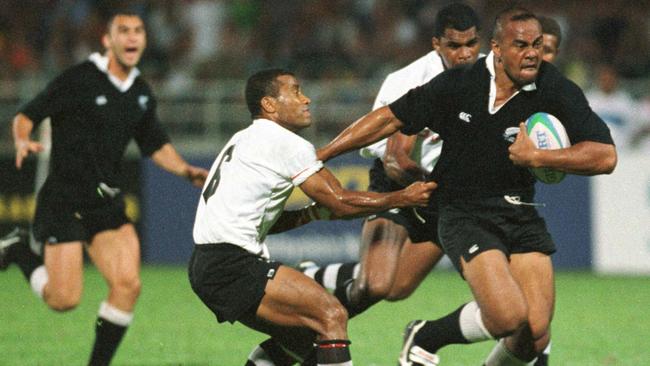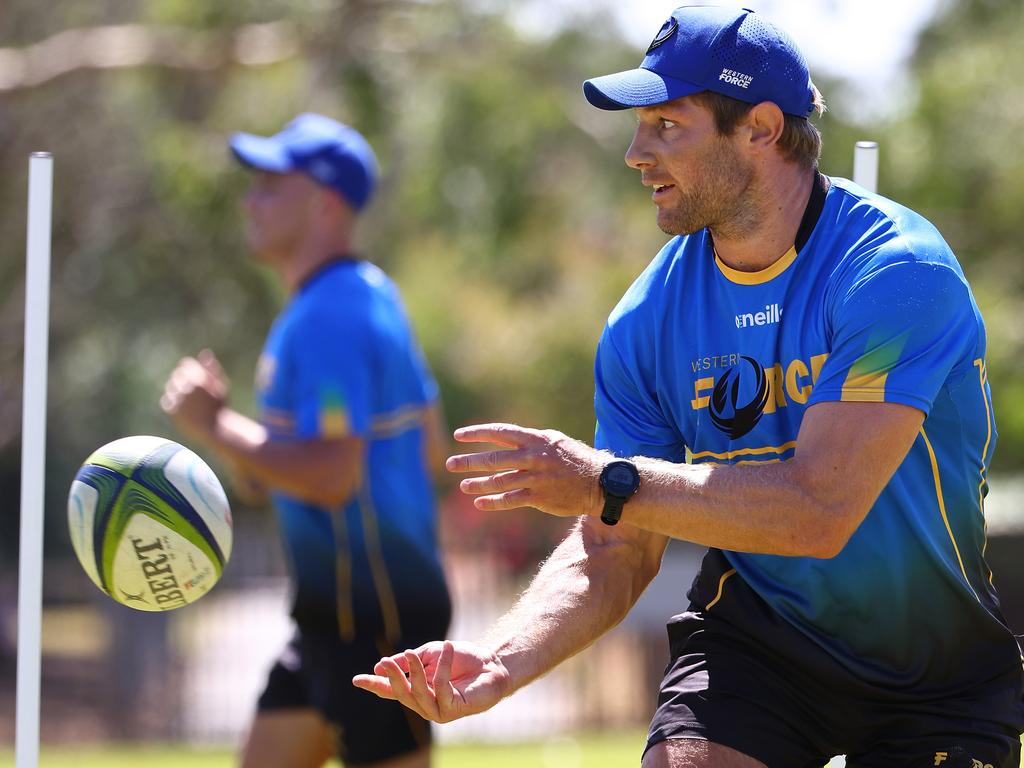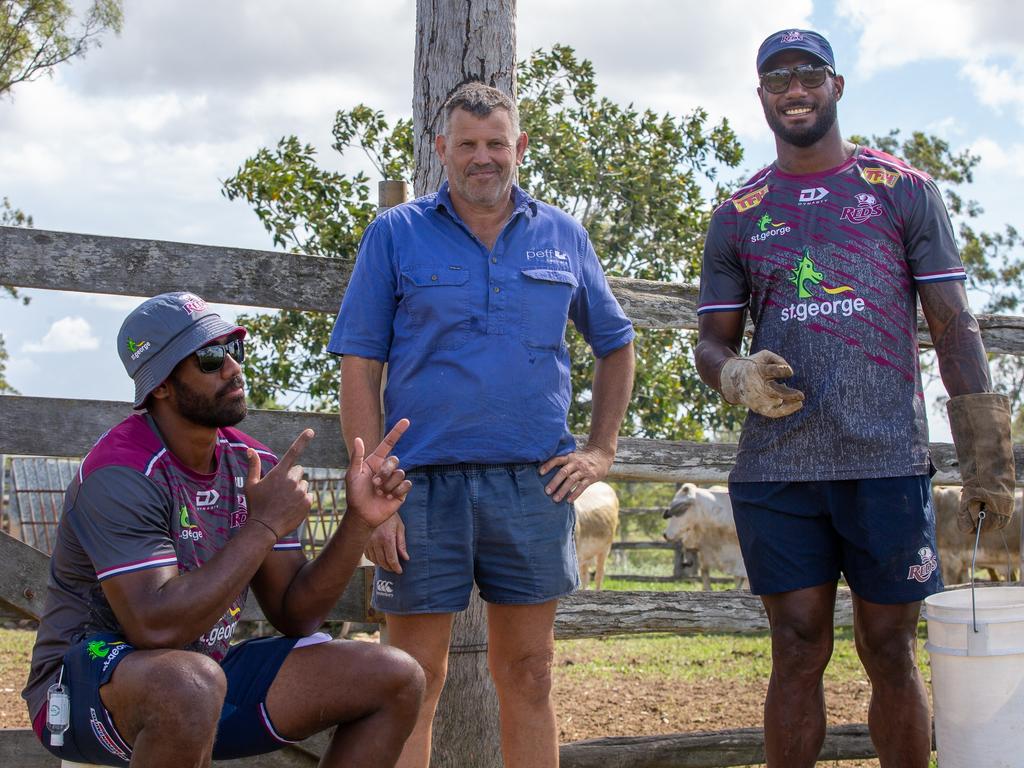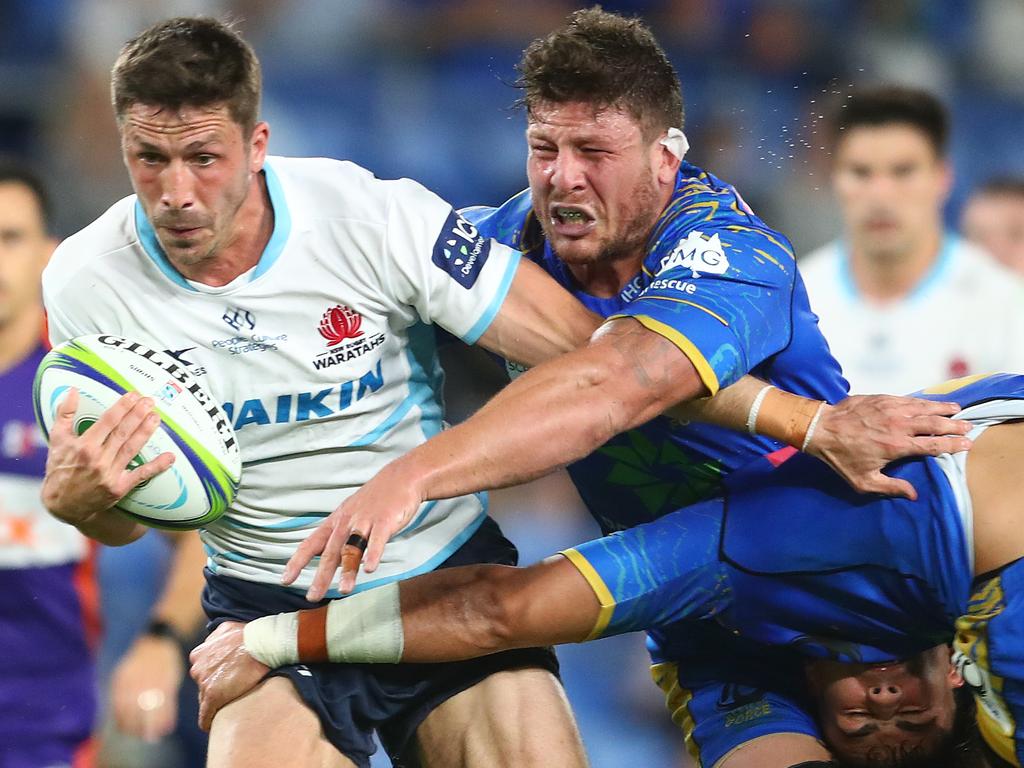Rugby no shrinking violet when it comes to player sizes
It’s in the nature of sport for everything over time to get, as the Olympic motto might put it, faster, higher, stronger. That’s just how it is.

It’s in the nature of sport for everything over time to get, as the Olympic motto might put it, faster, higher, stronger.
That’s just how it is.
There was a time when the 15- minute barrier for the 1500m freestyle was considered unbreakable.
Then Russian Vladimir Salnikov unleashed a 14.58:27 swim at the 1980 Moscow Olympics, on his way to ultimately lowering the world record to 14.54:76 in 1983.
There the record stood for six years until Glen Housman swam 14.53:99 in 1989 at the Australian trials for the Auckland Commonwealth Games.
Yet it was not Housman who was credited with breaking the unbreakable world record because, for whatever reason, the clock didn’t stop when he touched the wall. That honour went to Germany’s Joerg Hoffmann who, after winning the race at the 1991 world titles in Perth loudly boasted “I am champion of the world.”
Kieren Perkins brought him down to earth the following year at the Barcelona Olympics. And by 1994, Perkins had broken the world 1500m record three times.
But he never did fulfil his coach John Carew’s prediction that he would lower the mark to the 14.30s. That was left to Grant Hackett, and it took him until the 2001 world titles to accomplish it. That record, too, looked unbeatable until Sun Yang struck at the 2011 world championships.
And now his world mark stands at 14.31.02. That was set nine years ago, at the London Olympics. History and logic would suggest it’s time for a leap into the 14.20s.
So I was intrigued to read that former England rugby coach Stuart Lancaster co-authored a report that said professional rugby players had plateaued at their optimum weight.
The authors conceded that, of course, players could get heavier and taller but said any gains in this department would be offset by a fall-off in skills.
Exceptions to the rule crowd the mind. And no-one was more exceptional than Jonah Lomu.
England captain Will Carling recalls looking sideways at the All Black winger in the tunnel before running on for the 1995 World Cup semi-final and thinking “Oh, shit …” Lomu scored four tries against England and Carling ended up describing him — in the nicest possible way — as “a freak”.
If anyone can justify the theory that professional rugby players have reached their end point physically, Lomu would be the man.
There have been other giants of the rugby pitch — Fiji’s Nemani Nadolo comes to mind, at all of 137kg — but none of them ever reached the same heights.
Still, was that because defensive skills improved dramatically over time? Would we recall Lomu so fondly had he not stomped over Mike Catt in the dying moments of the amateur game?
Yet far from being a freak, was Lomu really just dramatically ahead of his time? He was 120kg at a time when many a Test prop weighed in far lighter.
Dual World Cup winner Dan Crowley played on both sides of the scrum for the Wallabies but was only 97kg. There was one pre-season where he tipped the scales at 103kg and was widely congratulated for having beefed up so effectively during the off-months … until it was discovered he had 6kg of weights strapped to his body.
Back then, it was something if a prop could benchpress 130kg.
Then Matt Ryan stunned the Wallabies by lifting 170kg. Last season, Taniela Tupou benchpressed 200kg. That is the way of the world.
When Tupou first burst onto the scene five years ago, no-one could believe that a player who weighed in at 135kg could move so fast or possess such skills.
There is no question Tupou is an astonishing athlete, but has everyone forgotten Rodney Blake, who played seven Tests for the Wallabies at tighthead in 2006?
“Rodzilla”, they called him, and like Tupou, he caused more than his share of mayhem, mainly by standing out in the three-quarter line and carrying would-be tacklers on his back.
It was pretty unsophisticated tactically but it does seems entirely legitimate to draw a direct line from him to Tupou.
Are we seeing that line being extended, from Tupou to the next generation of front-row strongmen? Zane Nonggorr has made his Queensland debut but will look to inject his 135kg frame and running skills into the equation on a more regular basis this year, while there are rumours of a couple of 140kg-plus Tongan props set to cause havoc in club rugby.
Lancaster argued that the average weight of backs fell for the first time at the 2019 World Cup, while there was a marginal increase in the weight of forwards. That might be a reflection of individual nation’s tactical needs — speed over power, perhaps — but projections over many decades would suggest it was a statistical aberration.
True, players can be too big for their position, however. Former Australian captain Mark Loane often argued that there was a maximum height and, to a less degree, weight beyond which a No. 8 would lose his effectiveness.
His concern arose when Wallabies coaches such as Alan Jones and Bob Dwyer began selecting specialist second-rowers like John Eales or Troy Coker at No .8 as a means of shoring up the Australian lineout. Loane’s argument was that the No. 8 needed explosive power to be effective and that someone of Eales’ height — 2m — was better suited elsewhere. Still, that’s a selection issue.
It’s understandable that rugby authorities are beginning to monitor the size of players. These days everything is being viewed through the filter of a potential massive concussion lawsuit.
Anecdotally, at least, it would seem that tall players are more likely to be guilty of a head high tackle because it takes greater effort from them to go lower. Tough.
Some generations of players might not measure up to the crop that preceded them but the wider trend is that rugby is always becoming bigger, faster, more powerful. It is up to World Rugby to stop the game becoming too obsessed with physicality.
But world records never last. Even when swimming decided to allow the outrageous, drug-tainted records of the East Germans to stand, all of them eventually fell.
Rugby players of the future will be bigger, stronger and better prepared than they are today.
That’s the simple reality with which rugby must deal.







To join the conversation, please log in. Don't have an account? Register
Join the conversation, you are commenting as Logout